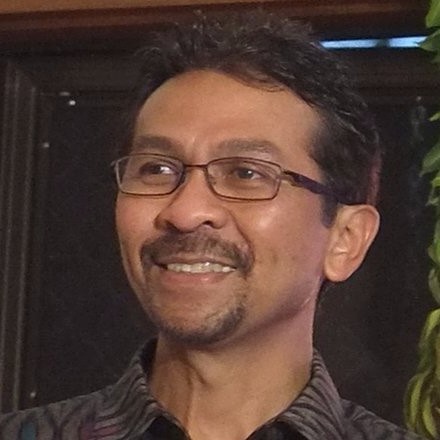
Transition to renewable energy poses an identity crisis for the oil and gas industry that is currently facing new challenges in efficiency and profitability in the new normal. Entities across the oil and gas value chain spectrum – exploration, production, midstream operators, wholesale, downstream distribution, trading and even retail operations – face entirely new and uncertain realities. These include ever-changing global hydrocarbon market prices, increased pressure from authorities on the environment and a fluctuating investment climate due to global uncertainty driven by dynamic and uncontrollable external forces.
To deliver a high level of profitability that is required to underpin hydrocarbon-based economies, particularly in Indonesia, both oil and gas companies and government bodies are seeking much higher operational efficiency rather than increased output. Transforming operation across the value chain through digital technology investment is increasingly gaining traction.
Companies that are prepared to leverage cutting-edge technologies will have a far more optimistic outlook. Investing in cloud computing infrastructure, sensor networks, IoT, edge computing, streaming messaging, open architectures, open standards and API’s are all on the cards. Open-source along with massive advances in Artificial Intelligence (AI) and Machine Learning (ML) have the power to enhance oil field processes digitally.
These technologies will help companies make data-driven decisions on critical issues with tighter processes and information integration across the entire oil and gas value chain. The opportunity for fully integrated groups from oil and gas companies addressing the whole value chain in this scenario is promising.
AI has been utilised across industries to predict trends, manage stock levels and handle massive amounts of data. The energy industry has only started to harness the power of AI to automate processes, predict trends, improve performance and generally make their operations more efficient and cost-effective. Other non-conventional ways that AI can be deployed are in resources exploration by mapping and identifying petroleum deposits beneath the earth or detecting equipment failure or gas leaks.
The sector has to deal with continuous change, even as they endeavour to increase profitability, operational efficiency and reduce costs. The sector must embrace the inevitable realities of energy market transition, decarbonisation and lower hydrocarbon prices with both lower upstream output and leaner trading margins.
Breakthrough innovations are the need of the hour that can only be had by leveraging advanced technologies. This was the focal point of the OpenGovLive! Virtual Breakfast Insight held on 10 June 2021 which was sponsored by Red Hat and Intel.
The session aimed at imparting knowledge on how tech can make a significant impact on oil and gas businesses and help drive operational efficiency and profitability whilst reducing the cost and implementing digital oilfield 2.0 innovation.
This session served as a great peer-to-peer learning platform to gain insights and practical solutions to integrate cutting-edge tools and technologies for public sector communication and to scale these, as necessary.
How Oil and Gas Industries Benefit From Digital Transformation

To kickstart the session, Mohit Sagar, Group Managing Director and Editor-in-Chief at OpenGov Asia delivered his opening address.
Mohit acknowledged that the oil and gas industry is one of the leading sectors that generate huge income. However, this industry has been negatively impacted over the last decade due to supply-demand factors and, more recently, the pandemic. While there are some uncontrollable factors, Mohit emphasised, there are others that companies can control, and they can control them effectively to achieve the desired goals.
The current use of technologies to mitigate the pandemic is not actual digital transformation as agencies have been deploying band-aid solutions and ad-hoc platforms to stay afloat. Digital transformation is more intentional, with strategy. It involves processes, technologies and people that facilitate business objectives of revenue, operational efficiency and cost containment.
Nevertheless, the core of transformation is people – the challenge Is how to get organisational culture on the same page with industry.
Digital transformation can bring a plethora of benefits to oil and gas industries such as improving operational efficiency, providing real-time data, increasing revenue, giving real-time analytics and report, increasing safety and decreasing risks.
Mohit encouraged the delegates to rethink how they harness the power of technology. This drive has to come from every unit, not just a few departments.
To effectively utilise technologies, partnerships are paramount to assist agencies in their digital transformation journey. Having competent partners is one of the keys to drive positive, effective, sustainable change.
Utilising Red Hat’s Technologies

Rully Moulany, Country Manager at Red Hat Indonesia was the next speaker who elaborated on the various technologies that Red Hat offers.
Red Hat Indonesia has been operational for seven years but globally it has been operating for over 20 years. The company is the biggest software enterprise in the world that focuses on open source technology.
Several Indonesian companies have been using Red Hat’s technologies particularly the Red Hat Enterprise Linux operating system. This system is the foundation on which agencies can scale existing apps and roll out emerging technologies across all types of cloud environments.
It provides a versatile environment and the necessary tools needed to deliver services and workloads faster for any application. It reduces deployment friction and costs while speeding time to value for critical workloads, enabling development and operations teams to innovate together in any environment.
The company also has multiple other technologies and currently focuses on open hybrid cloud, infrastructure automation and cloud-native application development and platform.
The company also has multiple other technologies and currently focuses on open hybrid cloud. The greatest benefit of a hybrid cloud strategy is the ability to choose the optimal solution for each task or workload. It can become a necessity for many organisations as they grow. To fully enable the capability to adapt to change without costly rebuilding, a hybrid cloud should be built on a consistent foundation of open source code. Other technologies that Red Hat focuses on are infrastructure automation and cloud–native application development and platform.
Rully was confident that delegates would gain valuable knowledge from the speakers about open source technology. He was eagerly looking forward to a robust discussion, highly interactive, productive, and beneficial to everyone.
Driving Real Digital Success In Oil and Gas

David Forden, Director – Application Development Solutions at Red Hat Asia, was the next speaker who discussed how to use Red Hat and open source technology to drive digital success in the oil and gas sector.
According to David, oil and gas companies have mistakenly assumed that an engineering-savvy company can easily benefit from digital solutions. However, there is a prerequisite change that must happen to drive digital success.
In the current context, the sector has been dealing with uncontrollable external forces, such as the pandemic, the continued volatility of the oil prices and the impending transition to renewable energy sources apart from a host of regulatory, legal and financial hurdles.
As a result, smaller companies are forced to focus on short-term initiatives to survive while larger companies and fully integrated companies have an unprecedented opportunity to get to the next level on costs, efficiency and adaptability. Digital transformation is crucial to create a sustainable future but at the same time, it has been overhyped.
On the bright, research indicates a digital programme that implements narrow, deep, high-impact initiatives results in 2%-10% improvement and reduces costs by 10%-30%. This research suggests that digital inputs play a key role in generating more profits and increasing efficiency.
David believes that the major stumbling block for digital success is embedded notions and norms. Information technology already has existing culture and processes that are hard to change. The IT division has not been ready to address digital transformation problems. Hence, both cultural and technological changes are required to achieve digital success.
Nonetheless, there are various ways to accelerate cultural change such as team rotations, lighthouse service/team, embedded Minimum Viable Skills (MVS) resources, hackathons, MVS alignment and progression, communication/user groups, integration of culture, people and technology, communities of practice and design pattern.
It is also crucial to differentiate between sustaining innovation from disruptive innovation. Sustaining innovation means improving existing legacy systems to be more efficient whereas disruptive innovation implies a complete change in how to conduct businesses for higher advantages.
Chief Information Officers (CIOs) must separate sustaining innovation and disruptive innovation deliveries and address them both very differently. Be this the treatment of people, skills, processes, organisation structure, technology or centricity. These are the differences in characteristics between sustaining innovation and disruptive innovation:
Sustaining innovation: Cost-sensitive, reliability-centric, monolithic, ticket-centric, outsourced, minimal change, specialised based on function, upgraded in place, manual of functionally automated, technology-centric, incremental improvement in stability and performance, commodity-centric.
Disruptive innovation: Customer-sensitive, niche and/or unproven, distributed, independent, segmented, feedback-centric, collaborative expertise, rapid change, specialised based on service, rebuilt continually, service automation, user-centric, improved features with acceptable stability, new-capability-centric.
Hierarchical traditional practices are unsuitable for disruptive innovation, according to David. The focus must be on innovation, collaboration and guarding a coalition type model. They need to experiment with new and unproven technologies, but the potential of disruptive innovation outweighs the risks.
Open source is a disruptive innovation as it has permanently altered the way that business is conducted. Thousands of other open-source software projects completely dominate the enterprise software landscape. Such software is now the engine that is used to power a dominant share of the worlds digital transformation initiatives across all industries.
Technology in the oil field such as Supervisory Control and Data Acquisition (SCADA) has been around for a long time and is used for many metering and control use cases. The advent of the Internet of Things (IoT), sensors and edge computing is the next generation of SCADA. It holds unique advantages and opportunities for data collection, processing, AI/ML and real-time analysis that equate to efficiencies and profitability. Edge computing is a natural ally for the rollout of IoT as it brings the processing closer to the source for distributed applications architectures leveraging IoT.
In closing, David pointed out that Red Hat not only offers a digital transformation in oil and gas but also has strong thought leadership in technology transition. They have a deep understanding of solution needs and offer extensive professional services to help ensure companies’ digital transformation. David invited delegates to partner with Red Hat and engage in more discussions and open dialogue.
Digital Transformation in Oil and Gas Industry

Widita Sardjono, Partner – Digital Transformation at PwC Indonesia, was the next speaker who discussed the landscape of digital transformation in the oil and gas industry.
He explained why digital transformation is necessary for the oil and gas industries, what areas that benefit from this transformation and how companies can successfully undergo digital transformation. Undoubtedly, profitability is the main factor that drives digital transformation in the sector and current statistics reveal the volatility of the industries’ profit.
As a consequence of price dips, the pandemic, climate change initiatives and global energy transition, prices will remain volatile for the foreseeable future. Digital transformation is the primary method to increase cost-efficiency to survive this unstable situation.
According to PwC Indonesia’s survey on digital transformation, the five most popular technologies used in oil and gas companies include Manufacturing Execution System (MES), cloud computing, energy analytics, connectivity or IoT and ML. These technologies are applied to areas such as predictive maintenance, digital process optimization, smart energy, transportation risk management and integrated planning. These areas have the biggest potential to yield huge benefits.
Research showed that the industry leaders expect a 10% revenue increase and an 8.5% cost reduction from digitalisation. Nevertheless, well over a third of respondents said that they are still digital novices and digital followers. Only a fifth are confident that they are digital innovators and digital champions. To achieve the goals, companies need to be digital innovators or digital champions.
Widita went on to explore ways to implement a digital transformation framework. Companies need to determine their business priorities and what areas to focus on for digitalisation. Five typical areas for oil and gas companies to focus on are subsurface evaluation, development or engineering, production operation and maintenance excellence, connected supply chain and smart health, safety, security and environment.
Digitalisation must be driven by businesses not technologies. As such, companies need foundational capabilities that include technology architecture, digital talent, data management and governance, as well as partnerships.
Widita ended his presentation by stressing the importance of agile culture. Digital transformation does not usually happen by building a grand plan and taking actions later on. It has inherent agility in which companies experiment with potential technologies and either repeat or discard the effort. With every iteration comes a learning experience for companies.
Interactive Discussion
After the informative presentations, delegates participated in interactive discussions facilitated by polling questions. This activity is designed to provide live-audience interaction, promote engagement, hear real-life experiences and impart professional learning and development for participants.
The first question in the opening poll was about the criticality of digital oil field transformation to the company’s near term success in the oil and gas value chain. Three quarters (75%) of the delegates agreed that digital transformation in the oil field is extremely critical while a quarter (25%) felt that it is somewhat critical.
The next question focused on how delegates characterise the current stage of digital oil field transformation in their company. The delegates were equally divided between pilot projects already rolled out (40%) and that their companies have already applied full-scale implementation of more than one project (40%). Just a fifth (20%) said that their companies have been planning the transformation but they have no implementation.
Mohit added that transformation can be bite-sized pieces in a form of a quick fix of a particular problem, it does not always have to be a grand gesture.
Asked if delegates view edge computing as part and parcel of their digital oil field transformation strategy, half (50%) felt it is somewhat critical and almost half (44%) said that the technology is supercritical. Only 6% thought that edge computing is marginally critical.
Inquiring about the percentage of their overall IT investment to digital oil field transformation strategy over the next 3 years, a little over a third (38%) said that the IT division gets less than 50%. A quarter (19%) said their IT team gets 30% of overall investment. More than one-fifth (12%) said the IT division gets less than 20%. Only 6% said their IT investment is over 50%.
The last question was on the role that open-source software plays in their companies. Half (50%) said that open source plays a somewhat critical role while a little over a quarter (26%) felt the technology is marginally critical. Interestingly, more than one-fifth (13%)thought open source plays a key role, the same number (13%) believed that open source is not critical at all
Conclusion
The Virtual Breakfast Insight ended with the closing remarks from David. After hearing the interactive discussion from the delegates, he was looking forward to working with them. He stressed the importance of edge computing and urged everyone to think more deeply about the strategy that needs to be in place. He encouraged people to lobby the group to get a better profile of investment for the IT division in digital transformation.
Before bringing the session to an end, Rully thanked everyone for their active participation. He encouraged the delegates to exchange ideas and gain more information about open source.















